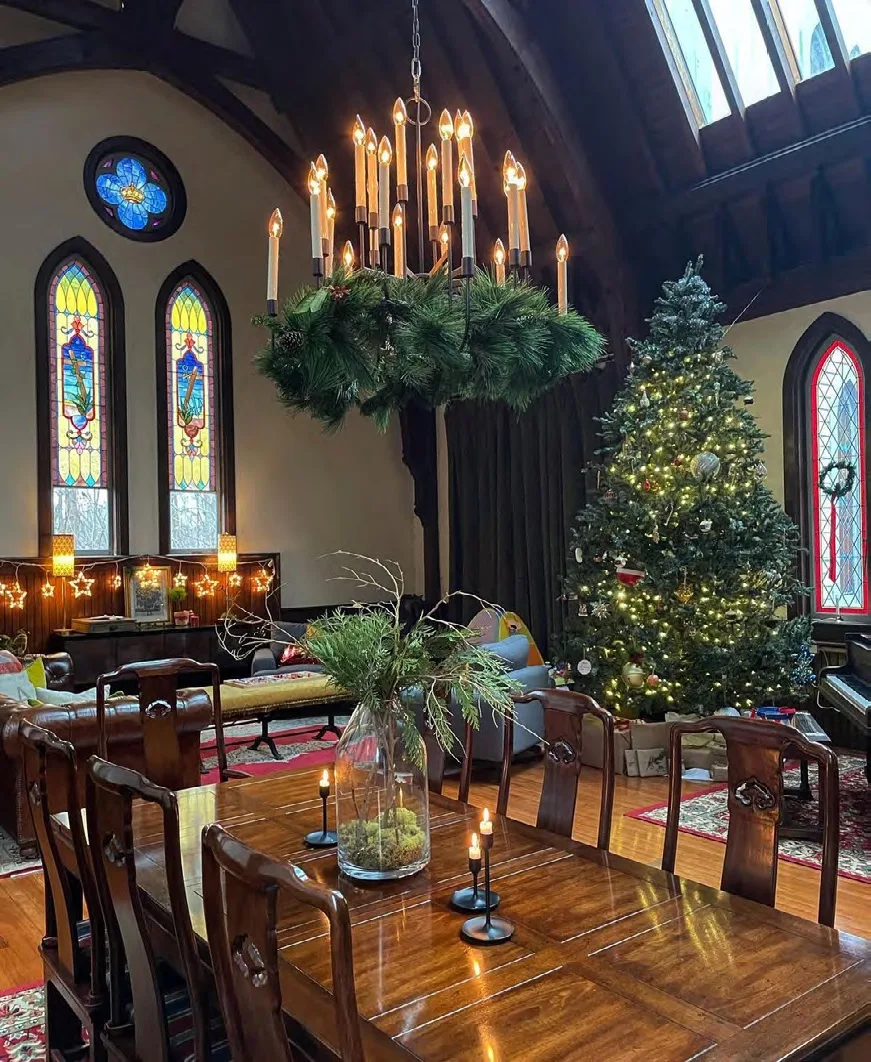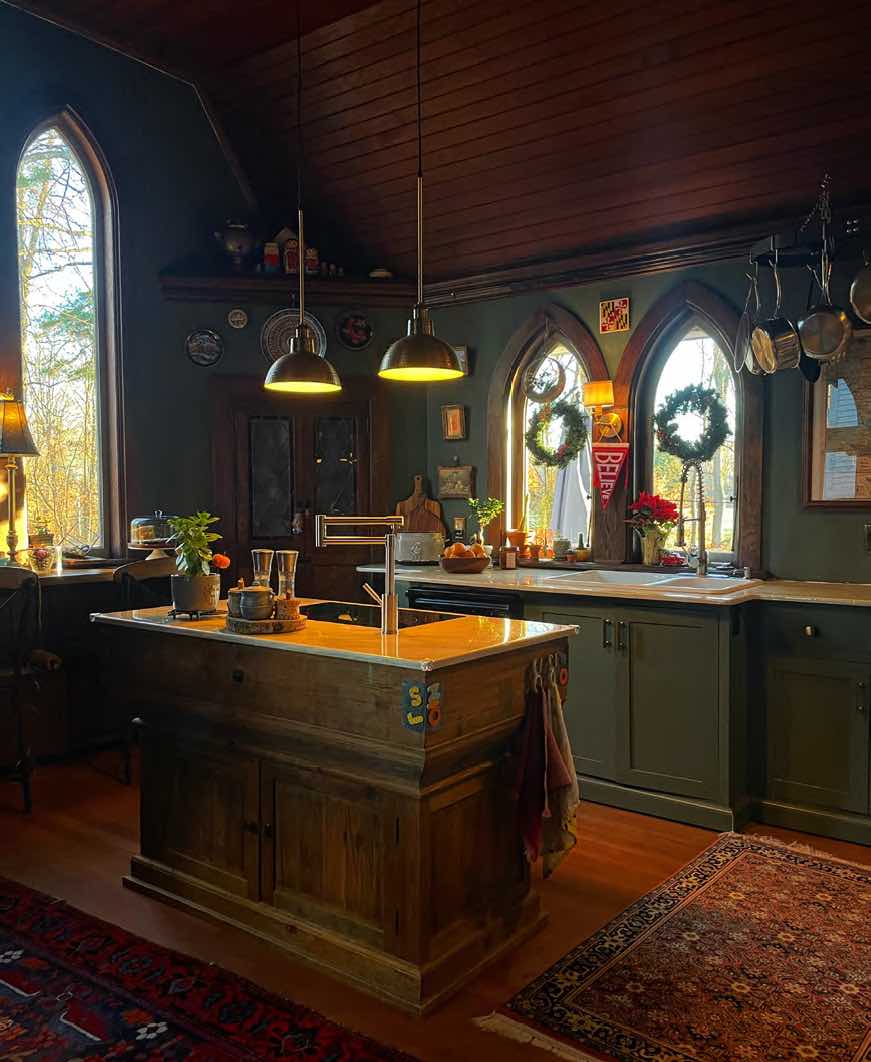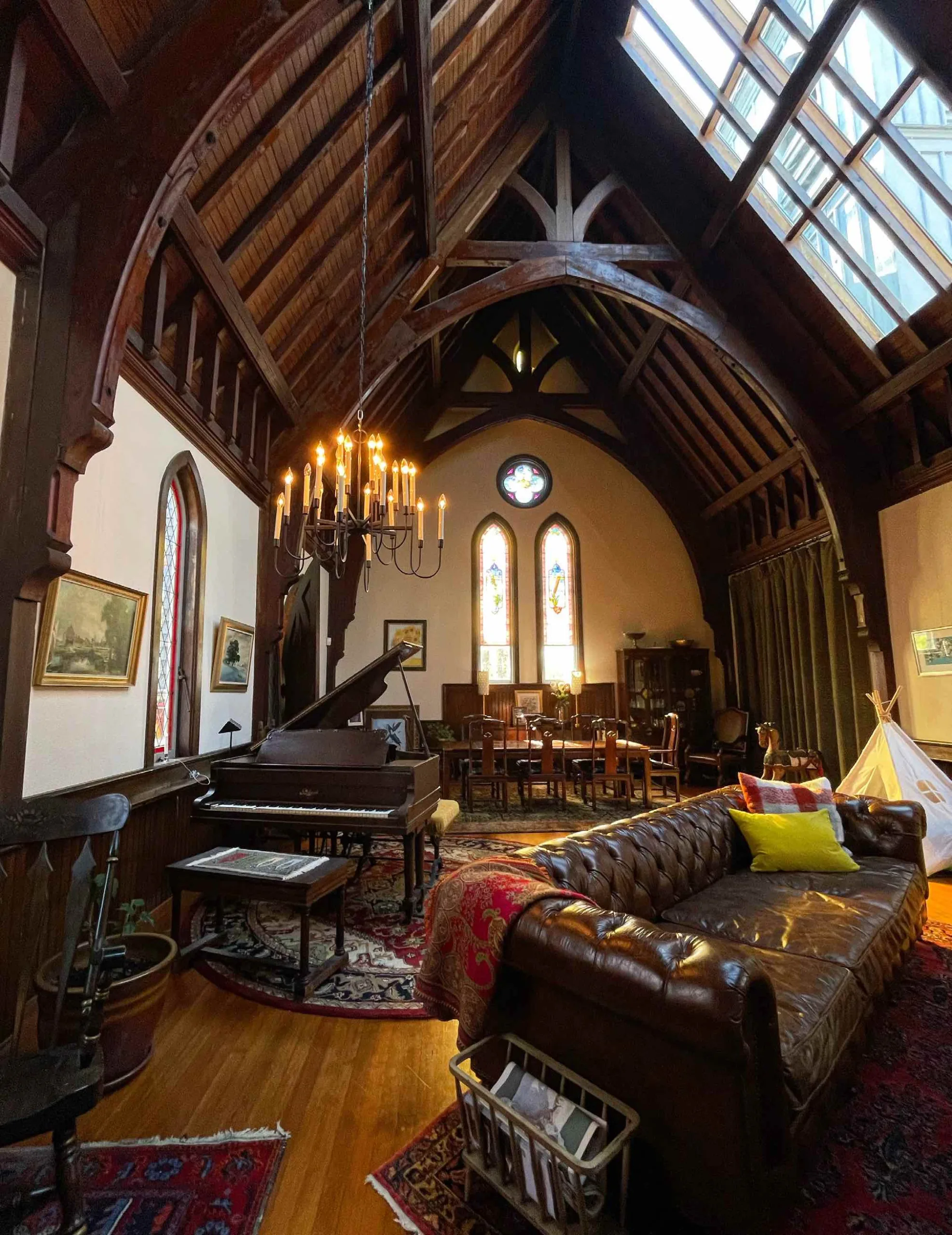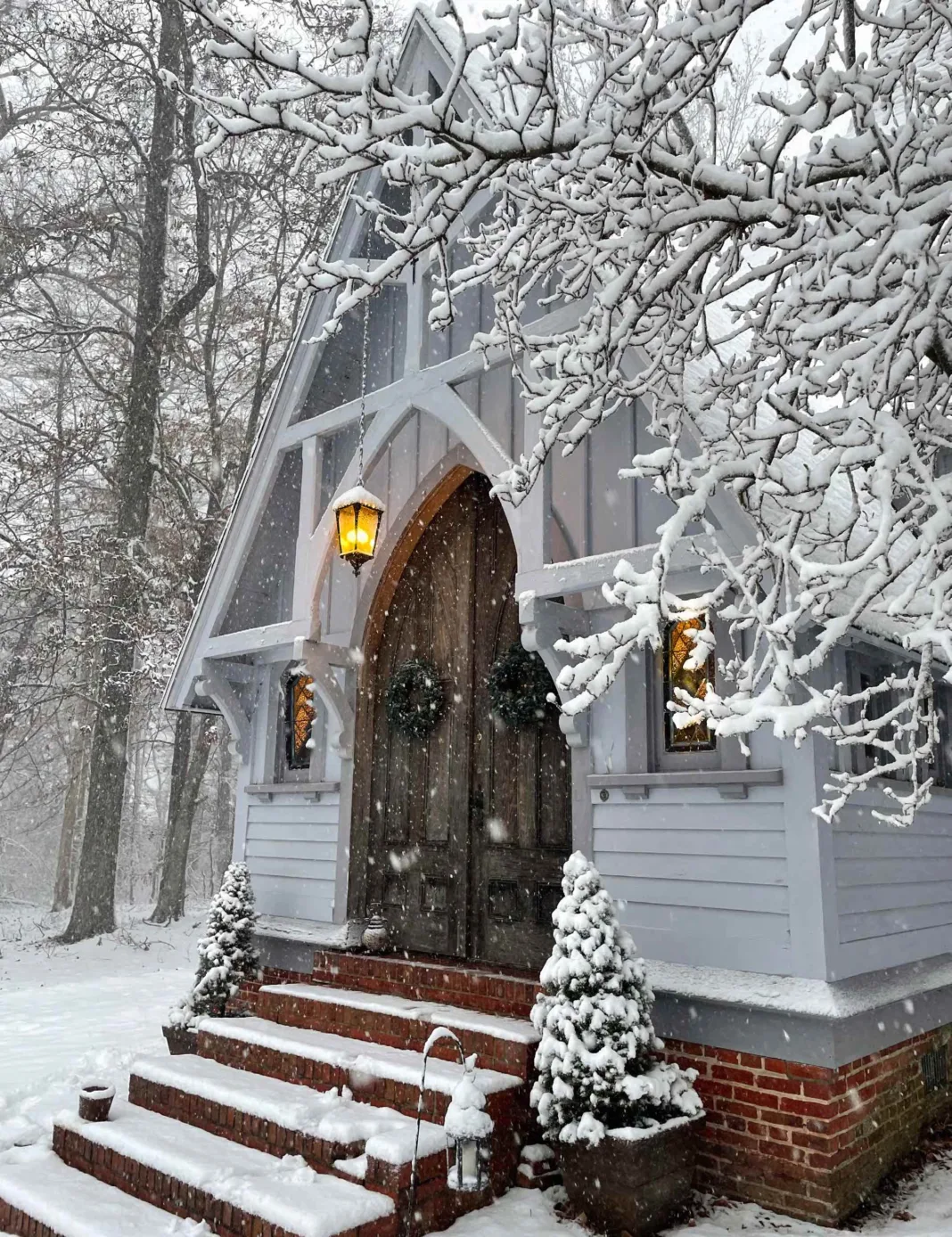Imagine living in a Gothic church turned home! When we read about a family—Anastasiia, Gunther, and their three children—in Maryland doing just that, our dark hearts trembled with love and jealousy. Now we dream of the light from stained-glass arches falling upon our cheeks as we sleep, the vaulted ceilings soaring above us as we rise to edit new issues of Enchanted Living.
Below we attempt to live vicariously by asking Anastasiia all about this glamorous living situation of our dreams.
Follow All Saints House on Instagram @allsaintshouse.
Enchanted Living: Can you tell us the story of how your family came to live in a Gothic Revival church?
Anastasiia: Well, we have always loved the idea of purchasing an old home, one with an abundance of history, unique character features, and enough projects to keep us busy for a while. This church in particular was a mysterious old building overrun with vines, down the road from our little farmhouse. We drove past it every day, dreaming of what it might look like inside. After seeing it listed for sale once in 2013, we inquired with the seller’s agent but never heard back and assumed it must have been sold relatively quickly. Years went by and we passed it every day, but then in January 2017 we noticed an Open House sign in front. We slammed on the brakes and quickly pulled into the driveway. This was an opportunity we couldn’t pass up!
It was just like love at first sight—hard to pinpoint what exactly made our hearts skip a bit, but they surely did. I think it was the grandeur of the space among many other things, like beautiful woodwork, colorful light streaming through the original stained glass, Gothic arches of windows and doors, and just the overall feeling that it’s meant to be ours. Gunther and I both did not see an old moldy building in dire need of repairs and some deep cleaning, but what it could be—a beautiful, unique home. I don’t think I’ll ever forget the moment when we looked at each other, standing in the great room, unable to say a word, overwhelmed by the shared feeling of an absolute desire to call this place our home.
EL: What is your favorite part of your unique living situation?
A: It’s the unique architecture of the place and its location. Old buildings were created with a lot of considerations, including their position relative to the sun and the aesthetic both inside and out. There is not a single angle or sight line in this house that isn’t pleasing to the eye, and it really is like living inside a work of art! And after living here for years, I am still frequently startled by a not previously discovered view of the house. In addition, All Saints House is surrounded by beautiful woods and a stream that is the headwaters to a regional river; it is just like living in a park. After growing up in an apartment in a city, being able to take a few steps out the door and end up surrounded by nature is its own sort of magic.

EL: What have you learned about the history of the church?
A: We’ve been able to piece together quite a bit of its history. All Saints Church was established when George R. Goldsborough donated thirty-five acres of the Mill Farm to the local diocese for the purpose of building a church. The first structure was built in 1870 and burned to the ground on the New Year’s Eve of 1899. Then a second building was erected, similar in style to the original, on the remaining brick foundation. The original thirty-five acres also included a rectory that burned in 1945, a parish house, barn, mill, and sexton’s lodge. Today only the church building remains on the site. After deconsecration and conversion to a home in the 1980s, the church saw three different owners before ending up in our hands in 2017.
EL: Do you have any thoughts about the Gothic style?
A: To be honest, I don’t think I ever pondered Gothic style before we purchased our house. Not in architecture, nor in art or fashion. But after living here for five years, I can see why architects keep coming back to this iconic style of vaulted ceilings, stained-glass windows, and pointed arches. Perhaps it’s because of the grandeur reminiscent of medieval architecture, as well as expressive elegance and captivating symmetry that is so enchanting.
EL: What are the challenges of making living spaces in such a large structure without the sort of rooms one would find in most residential properties?
A: The most challenging part was—and remains—creating functional spaces. We love the open spacious rooms, but they are not best suited for family living, pushing one to explore various options for creating designated living spaces. Thankfully, all the room configurations had been well thought out and executed by one of the previous owners before we purchased the house.
EL: Did you make a conscious decision to keep as many authentic elements as possible? Were there any that had to be sacrificed to adapt the structure from chapel to home?
A: Our goal is to preserve every original feature that we can while making this beautiful building a functional home for our family. We absolutely love the untouched woodwork throughout the house and are eternally grateful that no one ever painted it. In the great room, the wainscoting still keeps silhouettes of the old church pews that were attached to the walls—little ghosts of the past!
Stained-glass windows, though they require a fair amount of TLC, are so incredible that I do not see us ever removing them.
Among the things that were necessarily sacrificed to the conversion are the original church pews, although some of them were used for closet shelving, and so remain here. Like the door hardware, which has been plundered in the years since deconsecration, the rest of the pews are lost, and while this is incredibly disappointing, I hope to find an original All Saints Church pew someday at a local antique store.

EL: What is your favorite season to observe from inside the home? What about time of day? I’d guess the morning light is incredible!
A: Every season and any weather! Every time seasons change I am completely astounded by the beauty of this place. I love watching the light move through the house as the day goes by—greeting me with a sunrise in the kitchen, shining with golden hues in the library in the late morning, brightening up the altar room during early afternoon hours, and soaking the great room in golden glow in the late afternoon. I do not think a day goes by when I am not inspired by the incredible beauty of this house. And the number of times I have to drop everything to get a photo? It happens a dozen times a day!
EL: Do you have any advice to readers considering diving into similar projects?
A: We are in no way experts in the topic, but we would say that living in a space before making any major changes is a must. While it can certainly be said about any house, it is essential for one that really lacks the functionality of a regular residential building. It takes time to find the most efficient and enjoyable configuration of rooms and furniture. It took us a few years to find what works best for us in the house layout, and even then, we still move things around from time to time to accommodate changes in our lifestyle as our children are getting older. To own a place like this one, one’s heart must be truly in it. Projects like these rarely make sense on paper, so it is nearly always done out of love. So for us, All Saints House is a project with no end in sight. We are not doing it for a promise of profit but rather for a chance to love a place we call home, to make it our own, to bring it back to life, and to grow old here.
EL: And finally, how do you stay enchanted?
A: It would be hard not to when living in such an enchanting place! From the moment I stepped foot in here, I could not stop admiring every single detail of it, dreaming of its history, the people who built it with their own hands (one of the chief builders is buried in the adjoining cemetery), the people who lived here before us, and the people who came here every Sunday a hundred years ago. I think there is something absolutely magical about being a part of this building’s history, part of its long journey from an active church to a well-loved family home. One day we too will become “the people who once lived here,” another page in the long history of the All Saints House.


































